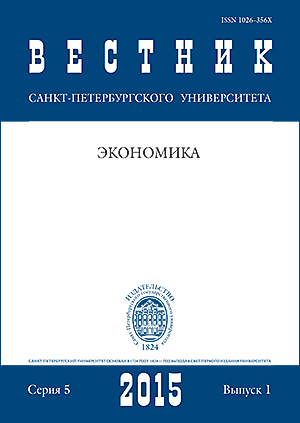World Income Distribution and Energy Consumption Analysis (Quintile Analysis of 112 Countries)
Abstract
Energy consumption forecasting is a task requiring comprehensive approaches and consideration of many factors: from climate change trends to potential emergence of innovations. Overall economic development, population living standards, including social structure patterns also play an important role. This article examines the impact of 112 countries’ population quintile income distribution on GDP energy intensity in 2010. In particular, we used the method of “imputed GDP”, where GDP per capita is allocated by quintiles using same proportions as in income distributions. We find a positive impact of “rich” quintiles, moderately positive of the “super-rich” and negative of the “poor”. Then taking into account these factors and using GDP per capita from “Global and Russian energy outlook to 2040”
we estimate future energy consumption in 2040. Two scenarios are considered: rigid inequality — all countries in 2040 keep GDP per capita quintile distribution of 2010, and flattening inequality — in developing countries (43 out of 112 countries in our sample) “super-rich” quintiles’ income partially distributed among the four remaining ones. Rigid inequality scenario shows an average drop in GDP energy intensity of 15%, while smoothing inequality scenario leads to less significant energy intensity decline in 12 countries. In addition, this article describes the theoretical mechanisms of income inequality formation and its impact on both macro and microeconomic indicators, as well as analyzes income inequality of different countries in late 1990s — early 2000s. Refs 19. Fig 1. Tables 12.
Keywords:
Social structure, energy consumption, quintile analysis, countries comparison, income inequality, forecasting, GDP energy intensity
Downloads
References
References in Latin Alphabet
Translation of references in Russian into English
Downloads
Published
How to Cite
Issue
Section
License
Articles of the St Petersburg University Journal of Economic Studies are open access distributed under the terms of the License Agreement with Saint Petersburg State University, which permits to the authors unrestricted distribution and self-archiving free of charge.






